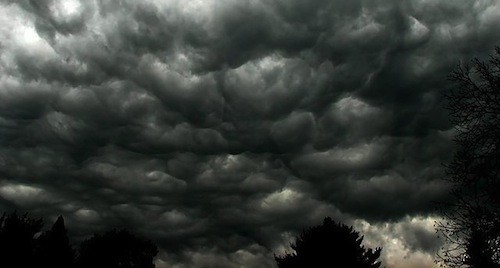On the road during a storm: what you need to do
With Summer almost upon us, the notorious Storm Season is entering its most active months.
While preparation is always important, sometimes a severe storm can hit without much warning. Given the unpredictability of Queensland’s summer storms, you need to know how to act when you’ve had no time to prepare – and this is especially true when you happen to be on the road at the moment a storm hits.

On-road risks during storms
When storms hit, they bring with them a new set of risks you have to account for if on the road. Not only does rain on the road make your vehicle more susceptible to losing traction, but braking distances will increase and visibility may be reduced depending on how heavy the rainfall is.
These are common risks, but a particularly bad storm can cause flash flooding across certain roads, create potholes, and even cause certain roads to break away (be sure to exercise notable caution on roads situated on mountains or near cliff faces).
Even when looking at the more common dangers, something like reduced visibility can lead to real dangers on main roads, motorways or anywhere that has a dense amount of traffic.
What to do during a severe storm
If you’re on the road when a big storm hits, then the best action you can take first and foremost is to stop driving, park somewhere free of potential hazards if possible (e.g. away from creek beds and large trees), and wait in your car until the storm passes.
However, just because this is the best approach, it doesn’t necessarily mean you’ll be able to do so. Sometimes you may caught in an area where pulling over isn’t exactly an option – you could be in a flood-prone area and need to get out before the water rises or on a motorway where there’s nowhere close by to pull over and stop.
In the event that you have to keep driving, the key is to take it slow. Normal speeds may be possible when rain is light, but heavy rain and strong winds that cut down visibility substantially are a different story. You should slow down to a pace where you can cope with the limited visibility and extend the distance between you and the car in front in case they abruptly stop – you’ll need that extra distance to brake safely without losing control of the vehicle due to reduced traction with the road.
If someone is driving aggressively behind you, don’t start speeding up because they’re annoying you or you feel uncomfortable. Keep driving at your own pace and focus on what’s ahead of you. If they want to pass, they’ll pass.
The event you come across a flooded road, do not attempt to drive through it. Even if you think it’s shallow, sometimes the water can be deceptively deep. With a strong current, you could be washed away.
Hail and cyclones
Heavy rain is one thing, but storm conditions such as large hail or cyclones (or at least cyclonic winds) pose even more unique risks. With hail, depending on the size, it can cause some serious damage to your vehicle. But if a large hailstone happens to smash through a windscreen or other windows, then you may need to force a pullover, regardless of where you are. If possible, drive under cover and wait for the hail to pass. If not possible, you may need to move a part of your vehicle where it’s safer – the bigger your vehicle, the more options there often are.
It’s not too often you’ll be caught in cyclonic conditions as weather warnings are given out in advance, but if you’re ever unlucky and do find yourself caught on the road, you should see if there’s anywhere nearby that you can head into that will keep you safe during a cyclone. If there are no buildings nearby, then your only option is to remain in your car. You should try and stop somewhere away from trees, power lines, the ocean or creeks/streams. There’s no guarantee you’ll be able to find an area that fits all of these requirements, but do the best you can. Wind up your windows, stop (handbrake on and in gear), and wait in the vehicle – do not leave it under any circumstances until the cyclone has fully passed.
* Image source: “Storm clouds” by cjohnson7 from Rochester, Minnesota – Flickr. Licensed under CC BY 2.0 via Wikimedia Commons.